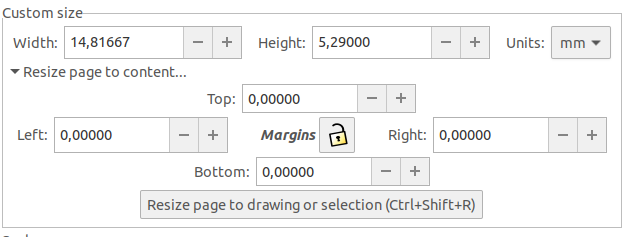Model library for PcbDraw - tool for creating awesome looking PCB drawings.
Clone the repository to your computer and specify one of the directories as a library when using PcbDraw. Currently there following libraries:
KiCAD-base- module library in a standard style for components from KiCAD standard libraries.Eagle-export- module library in a standard style for components on imported Eagle boards. This library is held separately as the import of Eagle boards to KiCAD looses library information and component names do not follow KiCAD conventions.
PcbDraw v0.6 is the last version, that uses the old library format, where 1mm =
1 user unit. We no longer require this and you can use arbitrary units. The
library have been migrated, however, if you use custom libraries, you might have
to migrate them. You can do so by invoking migrate_footprint.py from the
directory scripts on every footprint. I am sorry about this breaking change,
but it will make creating the libraries less confusing for the future!
Module is an SVG file containing a single component drawing. There are some rules below, but if you are interested in seeing a quick guide, jump to the section "Module drawing walkthrough"
The file has to follow these rules:
- the SVG image of the component should have size and viewbox attributes set
- the units in the SVG should be chosen such that they correspond to the physical size
- it contains one element with
id=originhaving attributesxandy. Its coordinates serve as a module origin. - origin should be a red rectangle of size 1x1.
- modules should not be too simplified (for example it is not OK for LED to be just a color circle).
- module is named exactly the same as the corresponding KiCAD footprint. The
extension is changed to
.svg. - for each module there is a corresponding drawing with suffix '.back.svg' (for 'pinheader.svg' there is a 'pinheader.back.svg'). This drawing contains view of the module from the other side of the board.
- each component should be placed on a tight canvas. The canvas size determines the highlighted area in component highlight.
Modules are placed in directories corresponding to KiCAD footprint libraries. If multiple footprints are represented using one module, the module should not be duplicated but symlinked.
Directory scripts contains script for automatic generation of modules - e.g.
pin headers, DIP packages, QFN packages, etc...
Side note: reasoning behind explicitly specifying origin. Even SVG format supports units and origin can be placed at SVG (0,0) point, it not that easy in practice. Most of the editors do weird things with coordinate system. Inkscape, for example, reverses Y-axis and translates the origin by the initial size of document. When you change the size of the document, the coordinates are not modified. Therefor, I find placing origin component as the simplest solution which should be compatible with any editor.
When you want to draw a component that is absent in the library, the easiest is
to use pcbdraw libtemplate footprint. This command takes a *.kicad_mod file
and outputs a SVG template for drawing. Let's say we would like to draw a
resistor. Therefore, we locate the corresponding *.kicad_mod file and invoke
it like this:
pcbdraw libtemplate footprint --front \
/usr/share/kicad/modules/Resistor_SMD.pretty/R_1206_3216Metric.kicad_mod \
KiCAD-base/Resistor_SMD.pretty/R_1206_3216Metric.svg
This will generate the following R_1206_3216Metric.svg file:
As you can see, it is roughly the KiCAD footprint. There is a red square. This square represent the footprint origin. Keep it in the file and don't move it!
With this set up, we can draw the footprint to be nice:
Once we are done, we can remove the "KiCAD footprint" layer:
Then we can shrink the document to size (under File -> Document Properties):
And Voilà! You just created a first, nicely-looking footprint:
Note that you can use the same procedure with the switch --back for the back
side of the component.
Please, help to increase usability of PcbDraw by adding more modules to the library. Feel free to submit a pull request with new modules.




